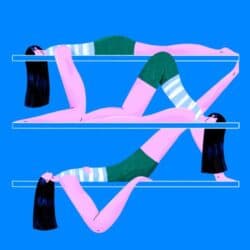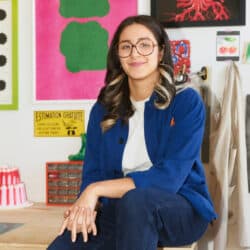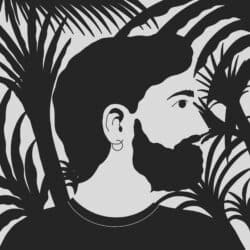Artists can offer new perspectives to shape policy and tackle complex challenges, says Patti Pon, president and CEO of Calgary Arts Development. She calls on local institutions and funders to be co-conspirators in engaging artists to play a bigger role in shaping Canadian society.
What sensation comes over you when you hear the first notes of a Mahler symphony in a concert hall? Or when the lights go down at a theatre right before curtain?
I can try to describe it, but if you’ve been there, if you’ve felt it, you know instantly what I’m talking about. Maybe you were moved to tears. Maybe you were moved to a different type of tears the first time you saw your six-year-old on the Christmas pageant stage – before you wound up with 170 hours of pageant videos in your closet.
Wonderful things happen when artists help us experience something or share a story with us. We become one. A 2017 British study found that the hearts of audience members at a live theatre performance beat in unison, their pulse rates speeding and slowing at the same rate. That is the power of the arts.
We need the arts now more than ever. We need artists to play a bigger role in our society, to come together to take the same transformational power of a concert or a piece of art and make sense of the nonsensical, to tell our stories, to connect us in a time when we often feel alone. We need them, too, to bring that power to shaping policy in our country – to apply their creativity to issues like affordable housing, lack of diversity in societal spheres, a basic minimum income, or taking urgent action on the climate crisis.
We need the arts now more than ever. We need artists to play a bigger role in our society.
We are living through a tectonic shift in our world, a shift that demands systems change. The voices of artists in this world need to be heard and amplified. It is already happening. But first let me explain where we are from my perspective and the path we have taken in recent years.
Calgary is my home, and myths about my home linger. Yes, we are home to the Calgary Stampede, which evokes images of bygone days of the old west, but, in truth, Calgary is a young, evolving city. It is home to the third most diverse population in the country, where 39% identify as a visible minority, a number that will top 50% in the next two decades. Some 18,000 artists live in Alberta, and we funded more than 23,000 performances, exhibitions, and artistic presentations, live and virtual, in 2021.
As president and CEO of Calgary Arts Development, a funder and steward of municipal public dollars, I know that the arts do not mirror the Canadian population. It is changing, but there is work to be done. We know the challenge ahead for us because we count – and we know how few of us on our stages, among our staff, or on our boards are visible minorities. That is unacceptable in 2023. In 2021, I was proud to have been the first woman of colour elected to the board of the Calgary Stampede in its 109-year history, and as of this year I’m not the only one. If the Stampede can figure out how to elect women of colour to its board, it shouldn’t be too difficult for the arts community to figure out a way to do the same.
Over the past decade, artists have had to cope with momentous shifts in their world. In my hometown, we had to deal with the impact of a once-in-a-100-year flood. Then came the worst economic downturn since the depression, followed by a worldwide pandemic.
Any one of those events would be catastrophic, leading to lasting trauma. We had all three.
When everything shut down, artists were more severely hurt than those in any other sector. Artists were the first to be let go. Contracts were cancelled. Performances or exhibitions were shut down. Artists bore the brunt of all these layered impacts, most recently the pandemic.
Artists were, of course, not alone. They may have had to endure the immediate loss of income and creative outlet, but every single one of us experienced loneliness in the pandemic.
We experienced loss. We experienced significant change. We experienced a kind of uprooting of everything we understood to be our world, our life. It didn’t matter if you were in a first-world country, a third-world country, a progressive country, or a military dictatorship. The experience, the loss, the confusion, the disappearance of touchstones had an impact on us all. It was the great equalizer.
We are now trying to find our way, not necessarily back to the way it was, or a new normal, but to a grounding of sorts. Artists can help us figure this out. Why did this happen? Why did it happen to me? Artists are masters of telling our stories. Of reflecting the world around us. Of connecting us. Of making meaning in time of confusion and chaos.
The last great pandemic before COVID, the flu epidemic of 1918, infected 500 million people, killing at least 50 million. From that despair rose the Art Deco movement, which was marked by a period of freedom of expression.
We need to let that kind of creativity and artistic impulse surface in us now. It cannot be suppressed, and we must not be self-conscious about it. That creative impulse is always there: How many of us picked up a guitar for the first time during the pandemic? How many began to paint watercolours or resurrected a book club that had been dormant? We need that creative outlet.
Just as we saw the Art Deco movement rise from the last great pandemic, we are on the brink of a similar artistic movement rising from COVID. Our artistic community is bringing us work that is related to the human experience. That’s what makes music so popular – it is all about hearing something that we feel.
Rather than run from that artistic or creative expression, let’s open our arms to it. When we do that, instead of experiencing the sense of loneliness, isolation, or loss, we share the experience of connection, of hope, of joy, and, most importantly, of belonging.
If everybody’s relying only on their own voice, their own perspectives, and their own ways of interpreting what they see in the world, we will miss out on the connection the arts create.
But artists also need to be heard in different ways and in different settings.
David Maggs, the inaugural Arts and Society Fellow at the Metcalf Foundation and author of the 2021 report Art and the World After This, challenges artists to “ready ourselves for a role in society that is more essential, applied, and accountable,” where the sector’s capabilities can be converted into leadership qualities.
We adopt a framework that aims to get our own house in order while enhancing our capacity to fix up the neighbourhood at the same time.
David Maggs, from “Art and the World After This”
“In this regard we adopt a framework that aims to get our own house in order while enhancing our capacity to fix up the neighbourhood at the same time,” he writes. “I hope we will discover that we are surprisingly capable of tackling the issues that have been crippling us long before a pandemic hit, while demonstrating a unique and expanding value to a society struggling with its own challenges of complexity – climate change, poverty gaps, cultural pluralism, collapsing civic society, etc.”
Maggs argues that rather than reverting to down-on-our-luck artists hoping that public funding will carry us forward, we must boldly embrace an “art-society” relationship teeming with unprecedented strength.
This is already happening. This is not a call for all artists to become political, but it is a recognition that as a movement there is an opportunity to create order out of disorder and give voice to the voiceless.
If we reintroduce artists into the ecosystem, as a vibrant and abundant keystone species, their presence will lead to the vibrancy and vitality of others in the system. If the keystone falters, all other species whither as well.
I cannot grant artists out of poverty. What I can do is ensure that, as a funder, we do not support initiatives that ask artists to work for free, or aren’t inclusive, or don’t have a policy on living wage or a robust environmental policy.
If we reintroduce artists into the ecosystem, as a vibrant and abundant keystone species, their presence will lead to the vibrancy and vitality of others in the system.
We have partnered with the Centre for Sustainable Practice in the Arts, which has developed a green-tools calculator for arts organizations to determine their carbon footprints, from office to stage to props department, including the way we dispose of props when the theatre run has ended. We have put out a call for organizations in Calgary to participate in a pilot in which they would use this green tool. This is an example of putting our money where our mouth is – supporting initiatives that are concerned with some of the larger issues of the day.
If we change the terms and conditions of the way we grant, then a societal redistribution can begin.
Like most in our sector, I thrive on change, and I tell people in the community the only thing certain is uncertainty. The only thing we know for sure is that what we did last year isn’t necessarily going to work this year. We already have all the indicators we need to tell us we need to be adaptable – to do things in a different way.
We no longer want to be invited to a policy forum just to perform a song or design a poster. We need a change to the system.
We know we are on a journey – a journey of reconciliation, a journey of equity, diversity, inclusion, and accessibility. The arts can come together to help shape this journey, to bring new perspectives to issues that go beyond arts-funding issues. Artists must be at the table, their voices heard and amplified. We no longer want to be invited to a policy forum just to perform a song or design a poster. We need a change to the system, and we need to embrace the moment. We know artists are not reticent to reflect the world around us, but their voices need to heard.
The Public Imagination Network has brought together a group of eight progressive, creative, and thoughtful artists. Calgary Arts Development and the Agora Foundation (which publishes The Philanthropist Journal) acted as convenors, trying to ignite and be a catalyst. We have a similar group in Calgary called the Cultural Instigators. They seek to build equity, diversity, inclusion, and accessibility in their communities to confront social issues through art and an anti-racist framework. Their spring 2022 session was called a “grappling,” and it was about bringing power to truth. They overturned the truth-to-power saying in looking for ways to lead us to an anti-racist Calgary, an initiative for which they have already raised $250,000. In June we hope to bring the Cultural Instigators together with the Public Imagination Network to discuss a way forward. Meanwhile, in Vancouver, there’s a cohort of artists that is working on LGBTQ2S+ issues.
This work is done most effectively at the municipal level, and I am calling for local institutions and funders to become more collaborative, to be what I call co-conspirators. Co-conspirators are about changing the system, bringing artists back into the ecosystem and inviting them to be much more overt and transparent in their role. It is a wonderful gift to have these voices around us each day, even if we lose sight of that while poring over the red ink on balance sheets.
I want people to know that artists are there and willing and active. Look at your own organization and the issues and challenges you may be facing. Chances are artists could help you find a solution.
The system must be changed and artists’ voices must be heard. They have earned that right. My organization’s strategic framework for the coming years is entitled Ákáakomatapoap, the Blackfoot word meaning “We are now going to begin.” It recognizes the transformational time the arts face. Our aspiration is for a truly equitable, inclusive, and accessible city where everyone belongs. And we believe artists will lead the way.
The artwork featured with this piece was created for Calgary Arts Development’s four-year strategic framework. In this video, artist Autumn Whiteway discovers the beauty of the balsam poplar and its parallels to the arts ecosystem.


